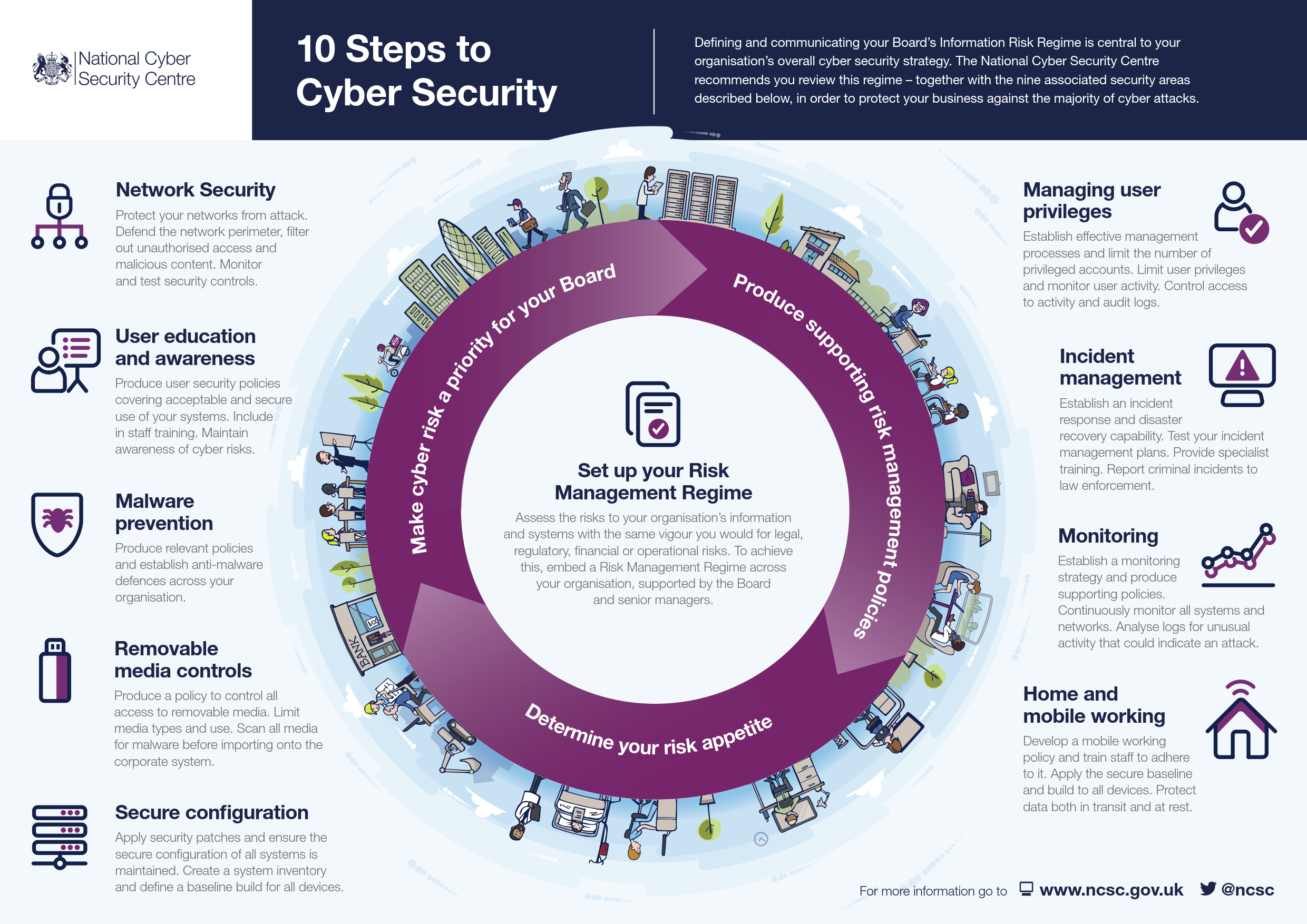In 2018, more than half (52%) small businesses were attacked by cyber criminals, according to a recent Cyber Security awareness survey of Alert Online among small and medium businesses. In an informative infographic, UK National Cyber Security Centre summarizes a 10-step-guide for organisations to protect themselves in cyber space.
The ten steps are the following:
- Risk Management Regime: Embed an appropriate risk management regime across the organisation. Clearly communicate your approach to risk management with the development of applicable policies and practices. These should aim to ensure that all employees, contractors and suppliers are aware of the approach, how decisions are made, and any applicable risk boundaries.
- Secure configuration: Having an approach to identify baseline technology builds and processes for ensuring configuration management can greatly improve the security of systems. You should develop a strategy to remove or disable unnecessary functionality from systems, and to quickly fix known vulnerabilities, usually via patching. Failure to do so is likely to result in increased risk of compromise of systems and information.
- Network security: Your organisation’s networks almost certainly span many sites and the use of mobile or remote working, and cloud services, makes defining a fixed network boundary difficult. Rather than focusing purely on physical connections, think about where your data is stored and processed, and where an attacker would have the opportunity to interfere with it.
- Managing user privileges: If users are provided with unnecessary system privileges or data access rights, then the impact of misuse or compromise of that users account will be more severe than it need be. All users should be provided with a reasonable (but minimal) level of system privileges and rights needed for their role. The granting of highly elevated system privileges should be carefully controlled and managed. This principle is sometimes referred to as ‘least privilege’.
- User education and awareness: Users have a critical role to play in their organisation’s security and so it’s important that security rules and the technology provided enable users to do their job as well as help keep the organisation secure. This can be supported by a systematic delivery of awareness programmes and training that deliver security expertise as well as helping to establish a security-conscious culture.
- Incident management: All organisations will experience security incidents at some point. Investment in establishing effective incident management policies and processes will help to improve resilience, support business continuity, improve customer and stakeholder confidence and potentially reduce any impact. You should identify recognised sources (internal or external) of specialist incident management expertise.
- Malware prevention: Any exchange of information carries with it a degree of risk that malware might be exchanged, which could seriously impact your systems and services. The risk may be reduced by developing and implementing appropriate anti-malware policies as part of an overall ‘defence in depth’ approach.
- Monitoring: Good monitoring is essential in order to effectively respond to attacks. In addition, monitoring allows you to ensure that systems are being used appropriately in accordance with organisational policies. Monitoring is often a key capability needed to comply with legal or regulatory requirements.
- Removable media controls: You should be clear about the business need to use removable media and apply appropriate security controls to its use.
- Home and mobile working: You should establish risk based policies and procedures that support mobile working or remote access to systems that are applicable to users, as well as service providers. Train users on the secure use of their mobile devices in the environments they are likely to be working in.































































